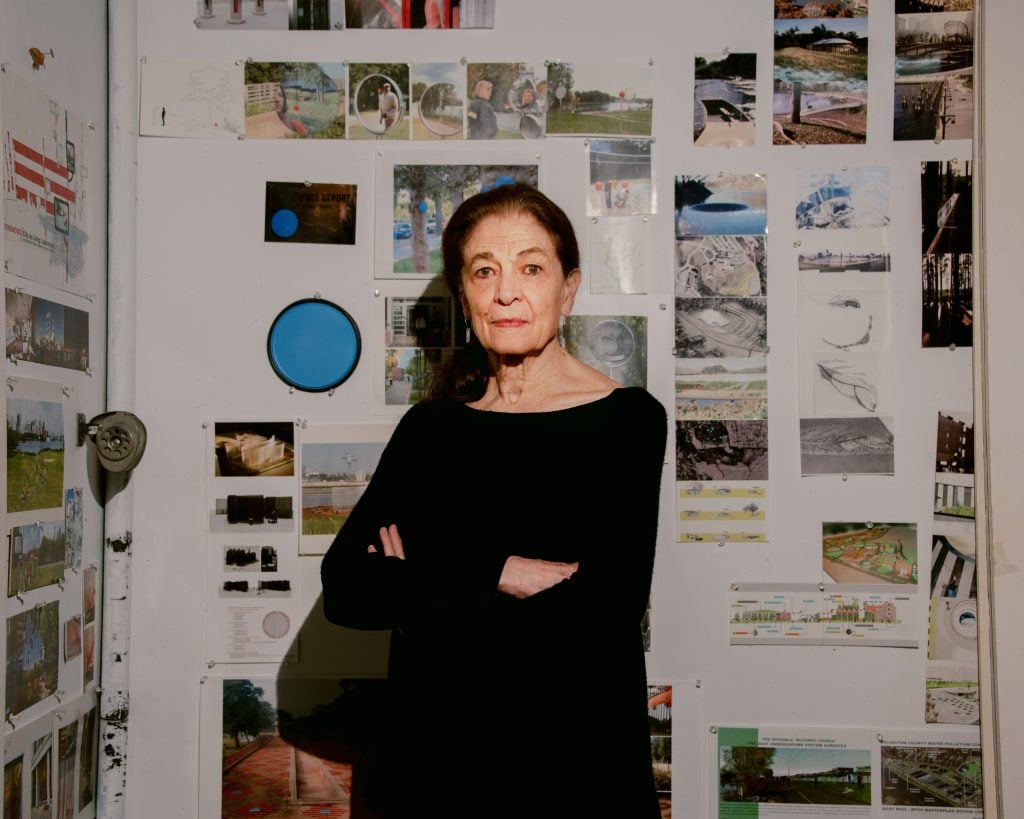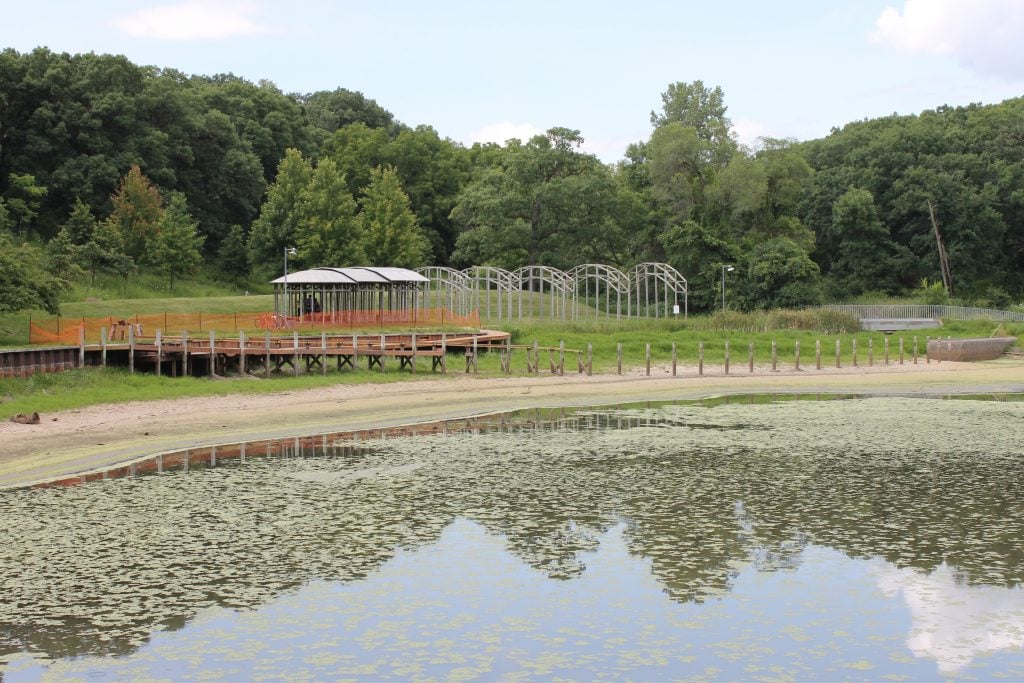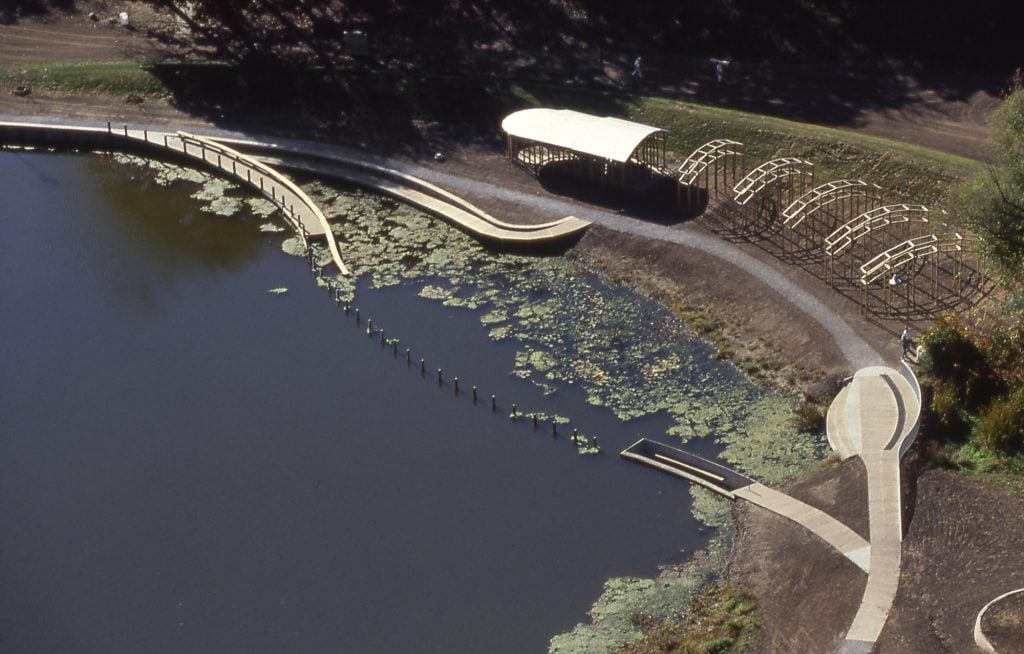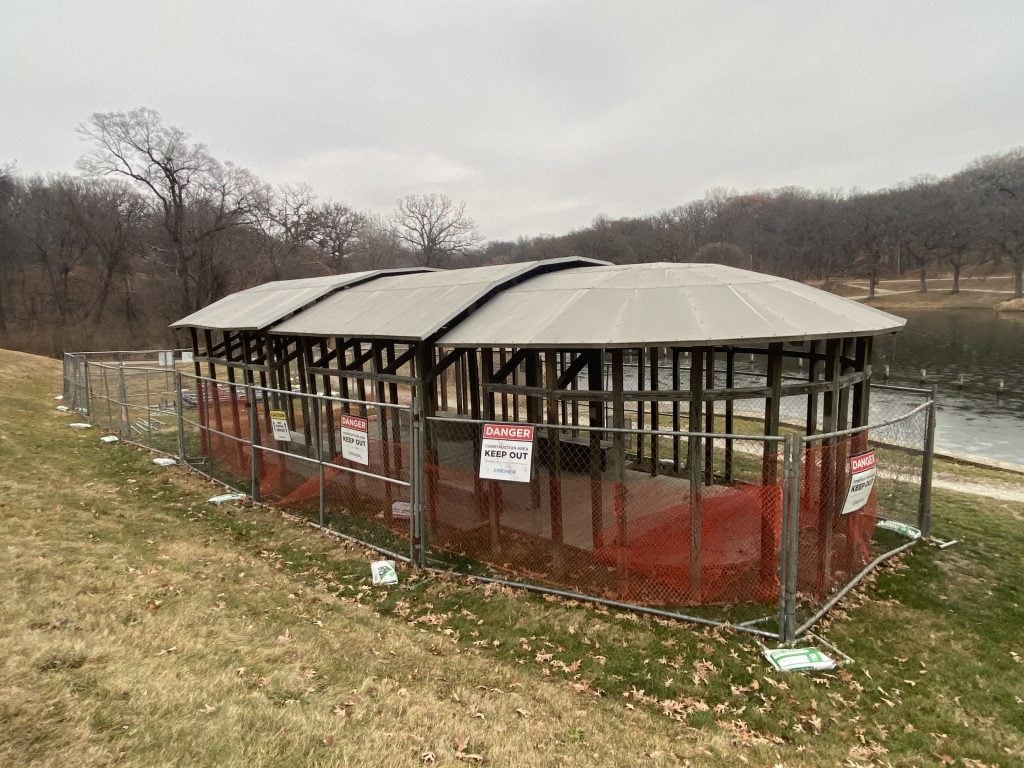Law & Politics
Artist Mary Miss Wins Injunction Preventing Removal of Her Des Moines Work
The work has been spared destruction until the case can be decided.

A federal judge in Iowa has granted a preliminary injunction to the artist Mary Miss, preventing the removal of her work amid a dispute with the Des Moines Art Center (DMAC).
Judge Stephen Locher wrote in a 19-page decision on May 3 that Miss is likely to prevail in her lawsuit against the DMAC, which has begun the process of removing a crumbling outdoor installation titled Greenwood Pond: Double Site. The judge had previously granted a temporary restraining order to prevent its removal.
The case has been closely followed because it challenges what a commissioning institution or agency can do when it is contractually obligated to continue costly upkeep of a work that could pose public safety risks.
The DMAC said in a statement after the decision that the judge held that “even the major areas that were declared unsalvageable and hazardous last fall” cannot be removed. “We are exploring our options as to how to resolve what has become a court ordered stalemate,” the museum said. “In the meantime, we will retain the existing fencing around the dangerous sections of the site.”

Mary Miss, Greenwood Pond: Double Site (1989–96), installed in Des Moines, 2014. Photo: © Sydney Royal Welch, courtesy the Cultural Landscape Foundation.
Locher himself noted that the case presented a difficult issue, a type of problem that “the legal system is simply ill-equipped to solve.” He agreed in his decision that the installation has not survived the “unavoidable impact of weather” because of the materials used to create it but that the situation appears at an impasse.
“The Art Center cannot demolish the artwork without Miss’s consent, which she will not grant, because the Art Center promised in a contract not do so,” Locher wrote. “Miss, however, cannot force the Art Center to repair or restore the artwork to its original condition because the same contract gives the Art Center unilateral discretion.”
Locher noted that the DMAC is unlikely to make further repairs and restorations because the museum has “reasonably” decided that the cost is too high.
“The end result is therefore an unsatisfying status quo: the artwork will remain standing (for now) despite being in a condition that no one likes but that the court cannot order anyone to change,” Locher wrote.
The judge also concluded that Miss had established that Greenwood Pond: Double Site is a “work of recognized stature” under the Visual Artists Rights Act (VARA), though is not a classified as a sculpture by the courts and is unlikely to prevail on her claim under the law.

Mary Miss, Greenwood Pond: Double Site (1989–96). Photo: © Mary Miss, courtesy the Cultural Landscape Foundation.
The DMAC commissioned the installation in April 1994 and it opened in 1996. It boasts boardwalk paths that lead walkers up and down ramps around the edge of a small lagoon, flanked by various architectural elements, within a park owned by the city of Des Moines.
In a statement, Miss seemed to consider the judge’s decision a victory and said she remained “grateful” to him as she believes it could “open the door to the consultations about the future of the site that were denied me.”
“Judge Locher’s ruling is an important step forward for Greenwood Pond: Double Site and the renowned artist Mary Miss,” said Charles A. Birnbaum, president and CEO of the Culture Landscape Foundation, which has been assisting Miss with her claim.
“Though the Court stated that the artwork ‘is not really a sculpture’ and does not fall within the definition of ‘sculpture’ under VARA, we expect that expert testimony at trial—if it gets to that point—will establish that land art is sculpture (e.g., Robert Smithson’s Spiral Jetty) and, especially that this land art, Greenwood Pond: Double Site, was accessioned into DMAC’s permanent collection as a sculpture.”

Fencing around the Mary Miss installation, Greenwood Pond: Double Site (1989–96) at the Des Moines Art Center in December 2023. Photo courtesy the Cultural Landscape Foundation.
In October 2023, the museum announced that it had suspended access to portions of the boardwalk and said it would conduct a structural review, while putting up the fencing to enclose dangerous areas. It then notified Miss in December 2023 that it planned to tear down the work, which quickly raised questions about the museum’s stewardship of the piece over the past three decades and its contractual obligations.
But on April 3, the DMAC said it finalized plans to remove the installation “in the interests of public safety,” following consultation with city officials and structural engineers.
“We noted a recurring pattern of structural, operational, and material problems dating back to 1996 that made the artwork vulnerable to decay, erosion, regular seasonal fluctuations, and extreme weather-related events, such as floods,” the museum said, stating that such repairs had cost it more than $1 million over the years. “This information was sobering, and it prompted a serious moment of reckoning.”





